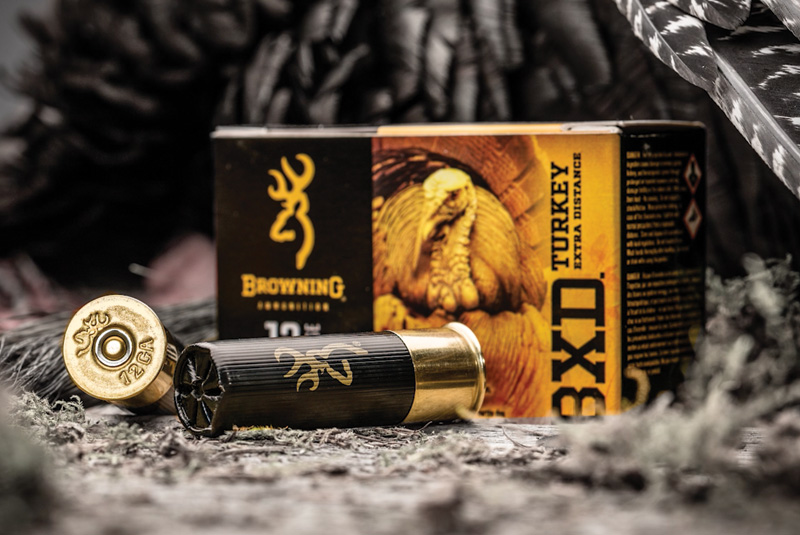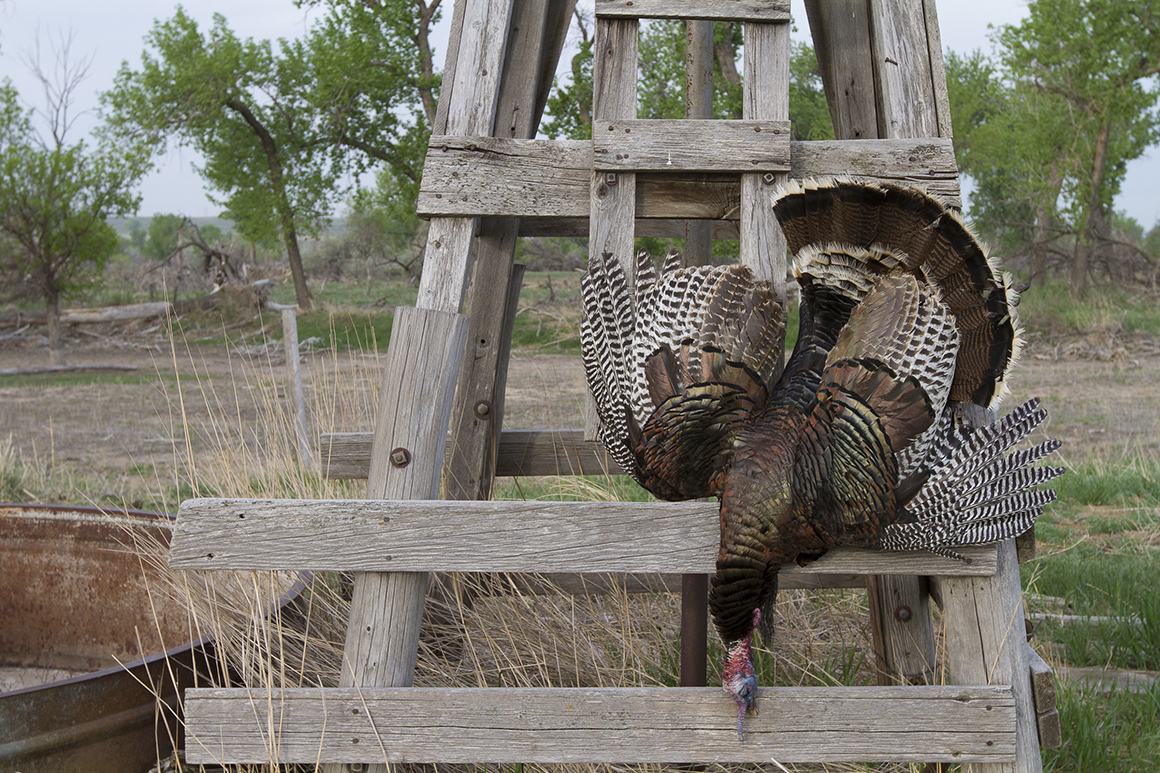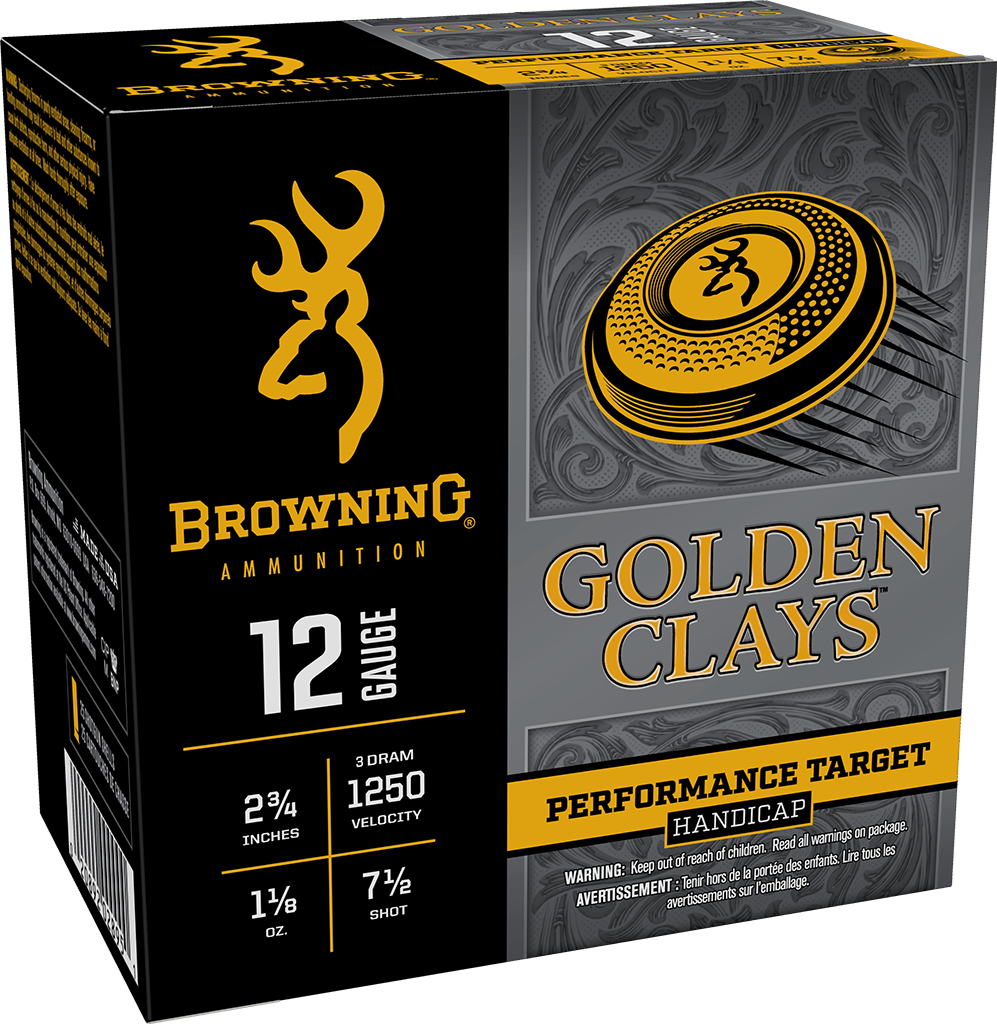Home on the Range for Turkeys
Turkey hunting is, at its best, an up-close and personal experience. The ideal is to call a gobbler in to 20 to 35 yards and drop it with one shot in a fatal flapping of wings. That is picture perfect. But what about that long beard that stalls out at 40 yards or even farther? Should you risk a shot at longer distances in the hope of taking a trophy bird? If you prepare properly, you can go a great way in reducing the risk and seeing a turkey tumble at 45, 50, or even longer yardages. But again, preparation is the key.


You should start with the right choke. Browning’s Invector-DS™ Turkey and Full Strut Turkey Tube chokes (the latter made for advanced back-bored barrels, which are standard on many Browning shotguns) are nearly mandatory add ons to your turkey gun. These will help produce the tight, uniform patterns that translate into greater lethal range.

With a long-range choke, a turkey hunter also needs to look at enhancing the aiming system on his gun. Out beyond 40 yards, a turkey’s head can disappear behind a front bead, so it’s time to think about a reflex sight or a turkey scope, such as the Leupold DeltaPoint® Pro reflex sight or, if you can find one, the Leupold VX-1 Shotgun Scope 1-4x20mm Turkey Plex Reticle. An added advantage of a reflex sight or a scope is the easy ability it gives a shooter to center up his pattern, not all shotguns firing to an individual shooter’s point of aim. For longer ranges, it’s essential to know that your turkey gun shoots to where you point it, or rather aim it, a turkey gun functioning more like a rifle. This is where shooting off a bench or a solid standing or sitting rest will get you sighted in; though that won’t generally translate into how you’ll be hunting in the field.
The final piece of the puzzle is the right cartridge. With Browning you have the choice of seven different TSS Tungsten Turkey loads, ranging from 3½-inch 12 gauge to 3-inch 20, No. 4, 5, and 6 shot in 3½- and 3-inch 12 gauge, and No. 5 in the 20, all with aerodynamically stabilized wads and nickel-plated pellets with resin buffering for reduced deforming, tighter patterns, better velocity retention, and deeper penetration. The 3½-inch 12s will deliver the biggest payload downrange, but will also deliver more whoomp to the hunter.

When it comes to shot size for turkey, I am a Goldilocks kind of guy–No. 5s are just right, at least for me. Your choice is up to you, as long as you know how it performs out of your gun, and that means firing it at a patterning board, or at least a turkey target. Set up the target and shoot from the position you will be assuming in the field–seated most likely–and try to get the steadiest rest you can, though one you can duplicate when you are hunting, meaning not from a vice or sled. Start at 30 or 35 yards–putting a target on a cardboard box will give you the approximate height of a standing turkey–then move the target farther out in five-yard increments till you get to where your pattern looks ineffective–where you can no longer consistently put a cluster of pellets into the head or neck. That is your maximum range, but figure that the bird needs to be at least five or 10 yards inside of that before it’s worthwhile trying to kill it.
Knowing you can kill a turkey at longer ranges is not the same as wanting to kill one at distance; but it will certainly enhance your confidence on the hunt. Let’s face it, though, the true beauty of turkey hunting is dancing cheek to cheek, or cheek to wattle. And that’s something that never gets old.
Follow Browning Ammunition’s social media channels for more hunting and shooting tips and updates on Browning Ammunition supported events and promotions on Facebook, You Tube, Instagram and Twitter.



